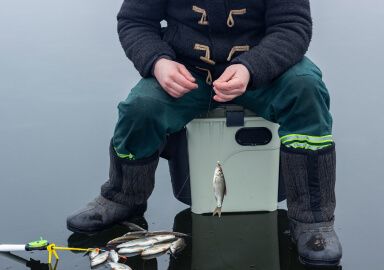Crappie
Crappies are a smallish freshwater fish in the USA that probably provides more fun and entertainment than many of the other species combined.
View 8 listings
8
listings
–
price starting from
2
countries
–
to the nearest trip
Where and When?
Both crappie species originated in the centre of the USA but have now spread, or been spread, to all 40 “contiguous” states, as well as Mexico and Panama. Both species prefer lakes, dams and slowish moving, larger rivers but white crappies generally prefer murkier waters and can contend with slightly faster moving water. While both species are often found in the same water bodies and exhibit similar activity and movement patterns, there is often a high degree of spatial separation. White crappies prefer more open areas of murky water with little cover or vegetation, while black crappies are usually found in clearer water, more open areas but near cover or aquatic plants. All crappies seem to feed early and late , as opposed to during the middle of the day, so fishing around these times is best. Both species are mostly found, or at least caught, in waters of 1.8 to 3.7 meters (6 - 12 ft.) in depth but they often also move close inshore when feeding. The most productive fishing is in the warmer months, from June onwards, until temperatures drop again. The best spots can be anywhere from a smallish pond to an open lake or a backwater in a large river.
About Crappie
“Crappie” is the strange name given to two species of freshwater fish in the USA. The name seems to refer to the fishes’ operculum, or gill cover, as opposed to the taste, or anything else, as it is generally considered to be excellent angling and eating fish. The white crappie (Pomoxis annularis) can be distinguished from the black crappie (Pomoxis nigromaculatus) by the darker areas, or spots, arranged in vertical bars down its body, while the black crappie’s spots are more randomly distributed. The white crappie also has six dorsal fin spines while the black species has more than six. Both species are silvery, particularly on the belly, with darker green or brown shades along their backs. Both species’ bodies are laterally compressed though the white crappie is often a little more elongate. Around breeding time, from June onwards, males develop darker colours on their chins, dig nests, attract females and then defend the offspring till they leave the nest. White crappies grow faster than blacks, reaching a maximum of 2.35 kilograms (5.2 lbs) during their 7 years lifespan, while black crappies have attained 2.47 kilograms and have lived 15 years in captivity. Both species feed mostly on invertebrates while young and progress to fish and even crayfish as adults.
How to Catch?
Despite their generally small size, the two species of crappie have been said to “form the staple of American family fishing”. This is because the fish is widely distributed, abundant, fairly easily caught and fishing for them can require little preparation, equipment or even time. While a small boat can assist in some areas, it is usually possible to catch crappies, of either species, from a bank or jetty. The simplest equipment can catch them and yet, if an angler wants to specialise, excellent results can be achieved by using specialised equipment, learning some skills and spending a bit of time in preparation. From boats “spider rigs” ( the use of eight rods radiating out from a boat), can produce excellent catches. On the other hand, the simplest rod with light tackle and a small bait, can also catch good crappies. Due to its small size it is often necessary to catch several crappies to make a full meal, but in many areas crappies are very abundant and there are few restrictions on catching them. Despite its small size and uninspiring name, crappies probably provide more “bulk” fishing enjoyment in the USA than any other kind of fish. This is possibly the reason it has been spread over almost the entire nation.






